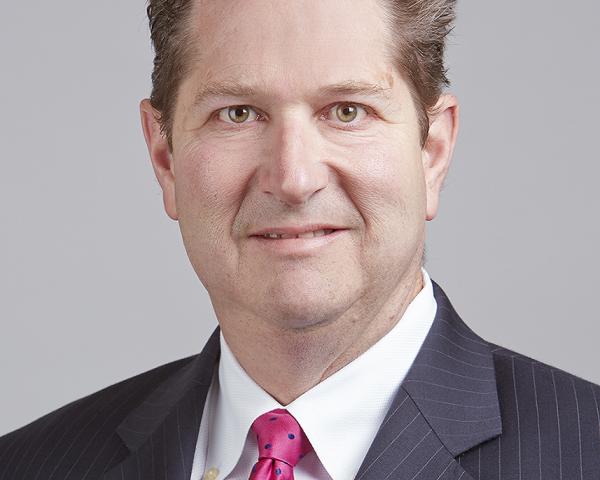Foreign investment – especially from Japan and China – will fuel U.S. deals activity for the foreseeable future.
Insurance M&A activity in the U.S. rose to unprecedented levels in 2015, surpassing what had been a banner year in 2014. There were 476 announced deals in the insurance sector, 79 of which had disclosed deal values with a total announced value of $53.3 billion. This was a significant increase from the 352 announced deals in 2014, of which 73 had disclosed deal values with a total announced value of $13.5 billion. Furthermore, unlike prior years, where U.S. insurance deal activity was isolated to specific subsectors, 2015 saw a significant increase in deal activity in all industry subsectors.
The largest deal of the year occurred in the property & casualty space when Chubb Corporation agreed on July 1 to merge with Ace. The size of the combined company, which assumed the Chubb brand, rivals that of other large global P&C companies like Allianz and Zurich. This merger by itself exceeded the total insurance industry disclosed deal values for each of the previous five years and represented 53% of the total 2015 disclosed deal value for the industry. However, even without the Chubb/Ace megamerger, total 2015 deal value was still nearly double that of 2014.
See Also: Insurance Implication in Asia Slowdown
While the insurance industry saw a significant increase in megadeals in 2015, there also was a significant increase in deals of all sizes across subsectors.
Tokio Marine & Fire Insurance’s acquisition of HCC Insurance Holdings, announced in June 2015, was the second largest announced deal, with a value of $7.5 billion. The purchase price represented a 36% premium to market value before the deal announcement.
The largest deal in the life space (and third largest deal in 2015) was Meiji Yasuda Life Insurance’s acquisition of Stancorp Financial Group for $5 billion. The purchase price represented 50% premium to market value prior to the deal announcement and continued what now appears to be a trend with Asian-domiciled financial institutions (particularly from Japan and China) acquiring mid-sized life and health insurance companies by paying significant premiums to public shareholders.
The fourth and fifth largest announced deals in 2015 were very similar to the Stancorp acquisition. They also were acquisitions of publicly held life insurers by foreign-domiciled financial institutions seeking an entry into the U.S. In each of these instances, the acquirers paid significant premiums.
In 2014, we anticipated this trend of inbound investment – particularly from Japan and China – and expect it to continue in 2016 as foreign-domiciled financial institutions seek to enter or expand their presence in the U.S.
Independent of these megadeals, the overwhelming number of announced deals in the insurance sector relate to acquisitions in the brokerage space. These deals are significant from a volume perspective, but many are smaller transactions that do not tend to have announced deal values.
In addition, there were a number of transactions involving insurance companies with significant premium exposure in the U.S., but which are domiciled offshore and therefore excluded from U.S. deal statistics. Some examples from 2015 include the acquisition of reinsurer PartnerRe by Exor for $6.6 billion, the $4.1 billion acquisition of Catlin Group by XL Group and Fosun’s acquisition of the remaining 80% interest of Ironshore for $2.1 billion.
See Also: New Approach to Risk and Infrastructure?
Drivers of deal activity
- Inbound foreign investment – Asian financial institutions looking to gain exposure to the U.S. insurance market made the largest announced deal of 2014 and four of the five largest announced acquisitions in the insurance sector in 2015. Their targets were publicly traded insurance companies, which they purchased at significant premiums to their market prices. Foreign buyers have been attracted to the size of the U.S. market and have been met by willing sellers. Aging populations, a major issue in Japan, Korea and China, as well as an ambition to become global players, will continue to drive Asian buyer interest in the U.S. However, the ultimate amount of foreign megadeals in the U.S. may be limited by the number of available targets that are of desired scale and available for acquisition.
- Sellers’ market – Coming out of the financial crisis, there were many insurance companies seeking to sell non-core assets and capital-intensive products. This created opportunities for buyers, as these businesses were being liquidated well below book values. Starting in 2014, the insurance sector became a sellers’ market (as we mention above, largely because of inbound investment). Many of the large announced deals in 2015 involved companies that were not for sale but were the direct result of buyers’ unsolicited approaches. This aggressiveness and the significant market premiums that buyers have paid on recent transactions should be cause for U.S. insurance company boards to reassess their strategies and consider selling assets.
- Private equity/family office – Private equity demand for insurance brokerage companies continued in 2015, even as transaction multiples and valuations of insurance brokers increased significantly. However, we have also seen increased interest among private equity investors in acquiring risk-bearing life and P&C insurance companies. This demand has grown beyond the traditional PE-backed insurance companies that have focused primarily on fixed annuities and traditional life insurance products. Examples include: 1) Golden Gate Capital-backed Nassau Reinsurance Group Holdings’ announced acquisition of both Phoenix Companies and Universal American Corp.’s traditional insurance business; 2) HC2’s acquisition of the long-term care business of American Financial Group Inc.: and 3) Kuvare’s announced acquisition of Guaranty Income Life Insurance. We anticipate private equity activity will continue in both insurance brokerage and carrier markets in 2016.
- Consolidation – While there has been some consolidation in the insurance industry over the past few years, it has been limited primarily to P&C reinsurance. With interest rates near historic lows and minimal increases in premium rates over the last few years, we expect the economic drivers of consolidation to increase in the industry as a whole as companies seek to eliminate costs to grow their bottom lines.
- Regulatory developments – MetLife recently announced plans to spin off its U.S. retail business in an effort to escape its systemically important financial institution (SIFI) designation and thereby make the company’s regulatory oversight consistent with most other U.S. insurers’. MetLife’s announcement was followed by fellow SIFI AIG’s announcement that it intended to divest itself of its mortgage insurance unit, United Guaranty. The two other non-bank financial institutions that have been designated as SIFIs, GE Capital and Prudential Financial, have differing plans. While GE Capital has been in the process of divesting most of its financial services businesses, Prudential Financial has yet to announce any plans to sell assets. In other developments, the new captive financing rules the NAIC enacted in 2015 and the implementation of Solvency II in Europe may put pressure on other market participants to seek alternative financing solutions or sell U.S. businesses in 2016 and beyond.
- Technological innovations – The insurance industry historically has lagged behind other industries in technological innovation (for example, many insurance companies use multiple, antiquated, product-specific policy administration systems). Unlike in banking and asset management, which have been significantly disrupted by technology-driven, non-bank financing platforms and robo-advisers, the insurance industry has not yet experienced significant disruption to its traditional business model from technology-driven alternatives. However, we believe that technological innovations will significantly alter the way insurance companies do business – likely in the near future. Many market participants are focusing on being ahead of the curve and are seeking to acquire technology that will allow them to meet new customer needs while optimizing core insurance functions and related cost structures.
Implications
- We expect inbound foreign investment – especially from Japan and China – to continue fueling U.S. deals activity for the foreseeable future. If there is an impediment to activity, it likely will not be a lack of ready buyers but instead a lack of suitable targets.
- Private equity will remain an important player in the deals market, not least because it has expanded its targets beyond brokers to the industry as a whole.
- The need to eliminate costs to grow the bottom line will remain a primary economic driver of consolidation.
- Regulatory developments are driving divestments at most, though not all, non-bank SIFIs. This remains a space to watch, as a common insurance industry goal is to avoid federal supervision.
- Actual and impending technological disruption of traditional business models is likely to lead to increased deal activiy as companies look to augment their existing capabilities and take advantage of – rather than fall victim to – disruption.











